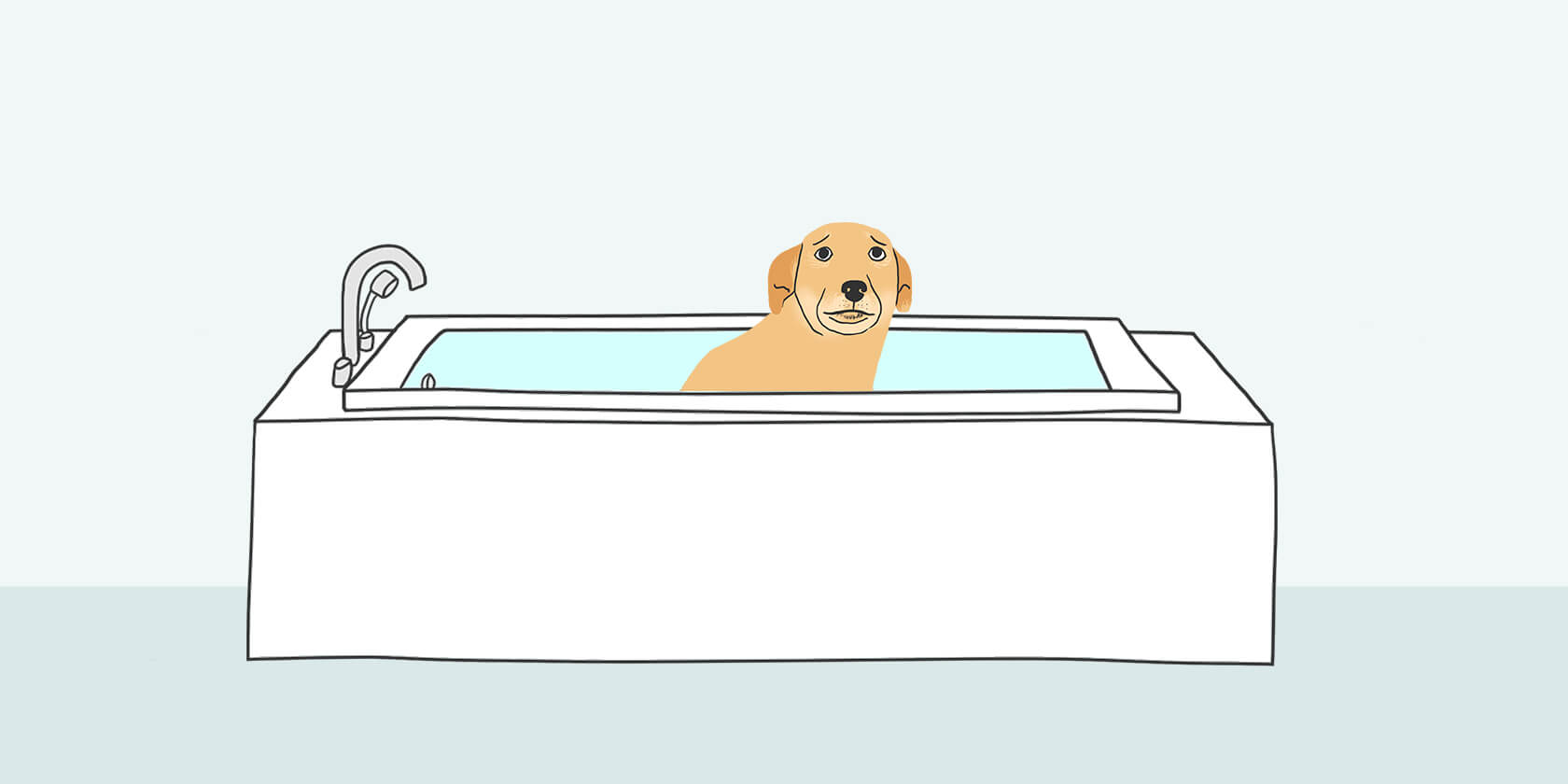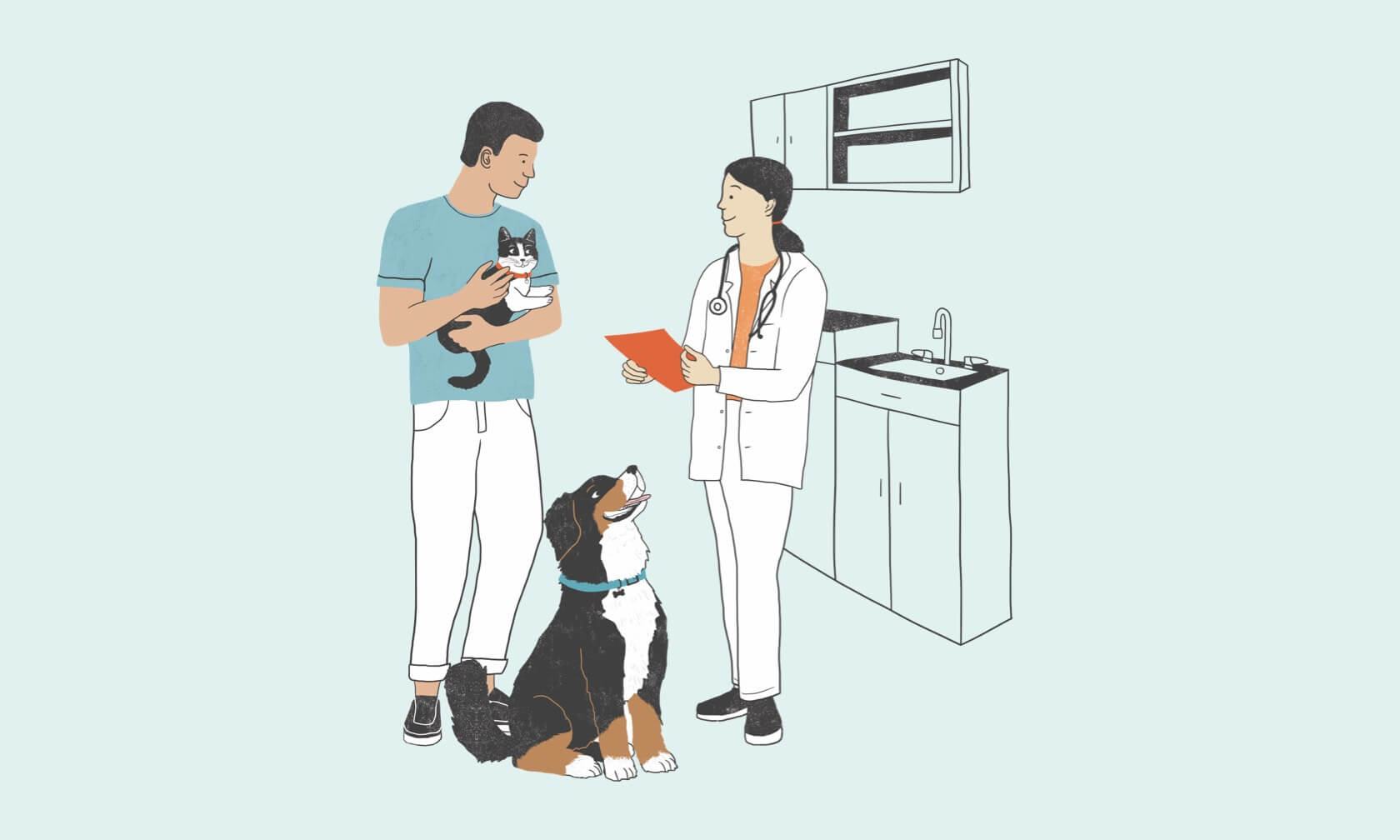Anything with "worm" in the name sounds pretty disgusting, right? But ringworm isn't caused by a worm at all — it's actually a skin infection caused by a fungus. While it's highly contagious to pets and humans alike, it can be treated relatively easily with some medication, a little time apart, and lots of love.
What is Ringworm?
The clinical name for this common skin infection is dermatophytosis. It can infect dogs, cats, and pretty much any living creature, including humans. It's caused by a fungus that feeds on the protein of the outer layer of hair, nails, and skin.
The name "ringworm" comes from the appearance of the skin during infection: a circular, red, raised rash that resembles a worm in the shape of a ring. However, the infection does not always appear as a round rash (or lesion) on dogs — instead, you may see round patches of fur loss (called alopecia). These patches and lesions can appear anywhere on the body but are typically located on the face, ears, flanks, and tail. Other symptoms include:
- Broken hairs
- Scaling (can look like dandruff in humans)
- Crusting, which appears as a cluster of dried skin cells adhered to the skin in a plaque
- Red patches and/or small, raised, hairless bumps on the skin
- Pimples
- Thickening and darkening of the skin

How Does Ringworm Spread?
Ringworm is highly contagious. The fungus can live on the skin, surfaces, soil, and other items such as clothing, brushes, towels, and bedding. If your pet is infected with ringworm, they remain contagious until they are treated or their immune system clears the infection. Even while undergoing effective treatment they remain contagious for about 3 weeks and in some cases multiple rounds of treatment can be required, especially if the fungus is still present in the environment (spores in the environment can stay infective for up to 18 months)[1].
It's also zoonotic, meaning it can pass from animals to people and vice versa. Thankfully, most human adults with a healthy immune system generally do not develop disease from the specific types of ringworm-causing fungi found in animals – though other types of fungi can cause ringworm in healthy humans[1]. Children, however, can get ringworm from infected pets, other children, or even the outdoors. Similarly, the elderly and people with a compromised immune system (such as those with certain diseases and those being treated with chemotherapy) are also susceptible[1]. Therefore, children and those with compromised immune systems should not handle a pet with ringworm.
How is Ringworm Treated in Dogs?
Ringworm may be annoying, but it’s relatively easy to treat. The good news is that ringworm infections in healthy dogs are usually self-limiting, meaning they will resolve on their own without treatment. However, if you suspect your dog has ringworm or has been exposed, you should see your veterinarian right away. They'll be able to properly diagnose ringworm and develop a treatment plan to clear up the infection as quickly as possible, helping prevent spread to other animals or people. A successful treatment plan is likely to include:
- Medications. Generally, a combination of oral and topical anti-fungal treatments (creams, ointments, or shampoos) is used in order to shorten the duration of treatment needed and to reduce the risk of spread to other animals or people during treatment[1].
- Length of treatment. Treatment will last anywhere from several weeks to months, depending on the severity of the infection. The treatment is usually continued for one to two weeks after all signs of the infection are gone, and two consecutive ringworm tests come back negative.
- Quarantine. To help minimize spread, it's important to restrict your pet to a room that can be easily sanitized and is not accessible to other pets. Ideally, do this in a room with a window for fresh air and ventilation when needed. If you don't have a room in which to quarantine your dog, keep them in an oversized crate. The idea is to keep fur and dandruff from spreading, so there's less to clean and disinfect, and it's easier to protect other pets in the home. If you need to take your pet out of the quarantine room (say for an outside potty break), don't let them play or interact with other dogs or cats. Take them along the shortest route to the door and make sure it's easy to clean. Be sure to sweep or vacuum the whole area your dog walked through and then mop with a disinfectant.
- Protective gear. When caring for your pet, you should wear gloves. Anytime you're in the room for cleaning, feeding, applying treatments, or giving a little attention, gloves are needed. It's also a good idea to wear shoes in the quarantine room and take them off when leaving the room. Daily washing of your clothes and any towels or bedding you use with your dog under treatment is also recommended to minimize the risk of contaminating other parts of the home.
- Grooming. If the infected area of skin is very small or in only one or two locations, some veterinarians may recommend trimming the hair (followed by safe disposal) around the area(s) to prevent the infection from spreading to the environment through contact. For larger areas of infection, full-body shaving may be recommended as well as topical anti-fungal treatments such as rinses or shampoos.
- Bathing. Your veterinarian will recommend the right anti-fungal shampoo. You'll need to bathe your pet 2 to 3 times per week and be sure to leave the lather on for fifteen minutes. Don't forget your gloves and wash your hands afterward.
- Sanitizing. It's important to disinfect during the entire treatment process. Start with anywhere your pet spent time before being diagnosed. Wash all bedding in hot water. In the quarantine room, sweep or vacuum daily and mop with a solution of chlorine bleach and water to kill the fungus. To make the solution, dilute one pint of bleach in one gallon of water.
In addition to damp mopping, wipe down all surfaces carefully. This includes the area you're using for bathing after each bath. If possible, take your pet on a walk while the room is drying and airing out. Remember to wear gloves while sanitizing and wash your hands when done. Change your clothes and wash them as soon as you finish sanitizing or handling your pet.
If treatment is stopped too early or the home and quarantine areas aren't regularly and thoroughly disinfected, reinfection can occur. The fungal spore can live in the environment for up to 18 months, so continue sanitizing for a while, even after you've completed the treatment.
Any human that develops skin lesions/rash should seek medical attention immediately. This is especially important for children, the elderly, or anyone with a compromised immune system.
Ringworm certainly isn't fun for you or your dog. But it's not the end of the world, and it's nothing to fear. With your veterinarian's guidance and a dose of patience and compassion, you can see your dog through this rashy situation and get back to games of fetch in the backyard in no time.
ZPC-01184R1
- Moriello KA, Coyner K, Paterson S, et al. Diagnosis and treatment of dermatophytosis in dogs and cats. Vet Derm 2017; 28(3): 266-e68.



